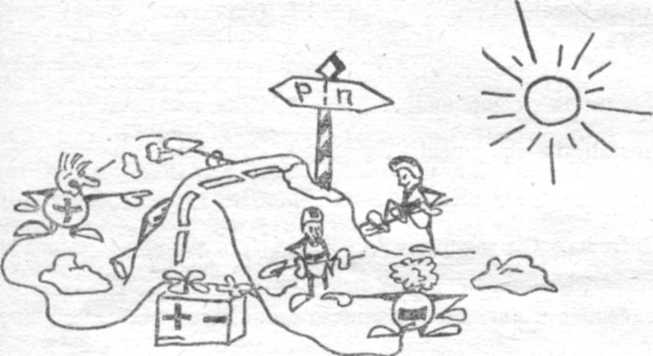
- •Unit 11. The Forward-Biased p-n Junction Language Work
- •Match the English sentences with their Russian equivalents. Define the forms of participles (Present/Past/Perfect/Active/Passive).
- •Translate the following sentences paying attention to Participle I.
- •Translate the following sentences paying attention to the ways of translation of –ing-forms.
- •Translate paying attention to the ways of translation of -ed-forms.
- •Change the complex sentences given below according to the examples and translate them into Russian:
- •Choose the sentences with Participle I from the ones given below and translate them:
- •Analyse the following examples and translate them.
- •Read and translate the following international words paying attention to suffixes and prefixes:
- •Fill in the table
- •Read the following words. What Russian words with analogue meaning do they resemble?
- •Starting from the second component
- •Read and translate
- •Translate the following word-combinations. Compare the word-order in English with that in Russian:
- •Match the following sentences with their translation:
- •Choose a correct modal verb
- •Specialist Reading
- •Read the text “The Forward-Biased p-n Junction” only once. How much can you remember? Answer these questions without additional reading.
- •If you failed try to answer these questions again after doing the exercises given below the text.
- •Study the text and translate the following:
- •Say word-combinations in bold in turn. Each next student repeats the word-combinations of the previous ones. The last student repeats everything.
- •Insert the following words in the gaps in the text below.
- •Speaking
- •In Russian write a content-based summary of the text you have translated.
- •Make a reverse written translation (from Russian into English) of your summary.
- •Find more information about different types of junctions and tell your group mates.
Choose a correct modal verb
1. Они должны были согласиться.— a. They have to agree, b. They had to agree, c. They must agree, d. They could agree.
2. Он может сделать это.— a. He can do this. b. He could do this. c. He is able to do this. d. He must do this.
Specialist Reading
Read the text “The Forward-Biased p-n Junction” only once. How much can you remember? Answer these questions without additional reading.
When are holes caused to drift towards the junction?
What end of the crystal are electrons repelled from?
What reduces both the width of the depletion layer and the height of the potential barrier?
What allows majority charge carriers of lower energy to cross the junction?
Why is there a net majority charge carrier current across the junction?
How does the current change entering the P-type region and leaving the N-type region?
If you failed try to answer these questions again after doing the exercises given below the text.
If a battery is connected across the crystal in the direction shown in the figure below, holes are repelled from the positive end of the crystal and are caused to drift towards the junction; and electrons are repelled from the negative end of the

The drift of holes and electrons towards the junction reduces both the width of the depletion layer and the height of the potential barrier.
crystal and also drift towards the junction. This drift of holes and electrons towards the junction reduces both the width of the depletion layer and the height of the potential barrier, and the junction is said to be forward biased. The reduction in the height of the potential barrier allows majority charge carriers of lower energy to cross the junction and since the minority charge carrier current remains constant, there is a net majority charge carrier current across the junction from the P-type region to the N-type region. This current increases very rapidly with increase in the forward bias voltage.
The holes drifting through the P-tуре region towards the P-N junction may be considered to have been injected by the positive terminal of the battery. Some of these holes may recombine with electrons diffusing across the junction in the other direction and so the hole current across the junction is slightly (немного) less than the injected hole current. After they have passed across the junction the holes recombine with the excess electrons in the N-type region and the electrons that have not recombined cross the junction. The total current is the sum of the electron and hole currents and is constant throughout the crystal. The current enters the P-type region as a hole current and leaves the N-type region as an electron current.
Study the text and translate the following:
батарея подсоединена к кристаллу
вынуждены смещаться к переходу
уменьшает как ширину обедненного слоя, так и высоту потенциального барьера
считается, что переход смещен вперед
т.к. ток неосновных носителей заряда постоянен
полный ток основных носителей заряда
ток усиливается очень быстро
с увеличением напряжения прямого смещения
считается, что дырки были добавлены
электроны, распространяющиеся (диффундирующие) через переход
избыточные электроны
по всему кристаллу
дырочный ток и электронный ток
